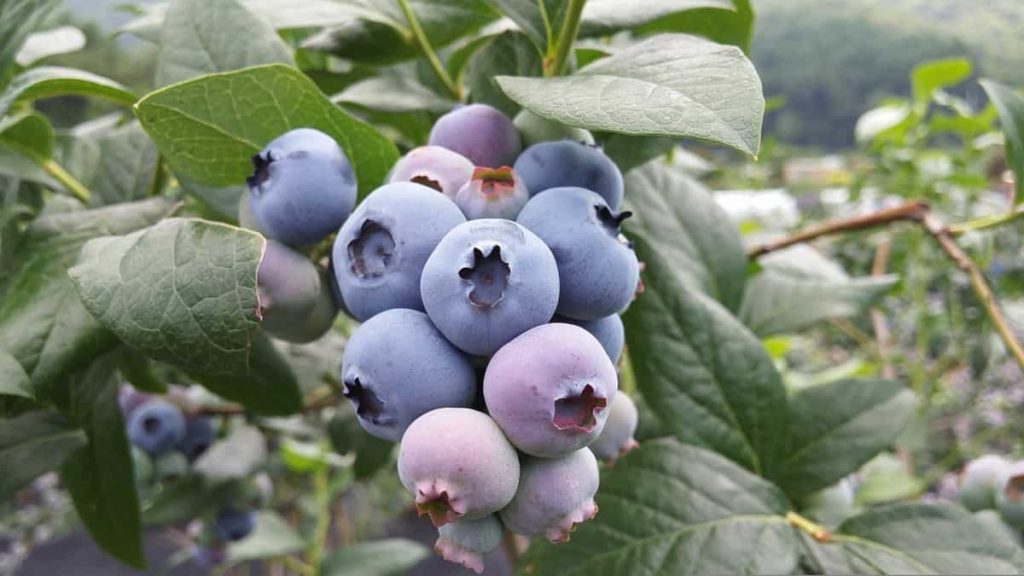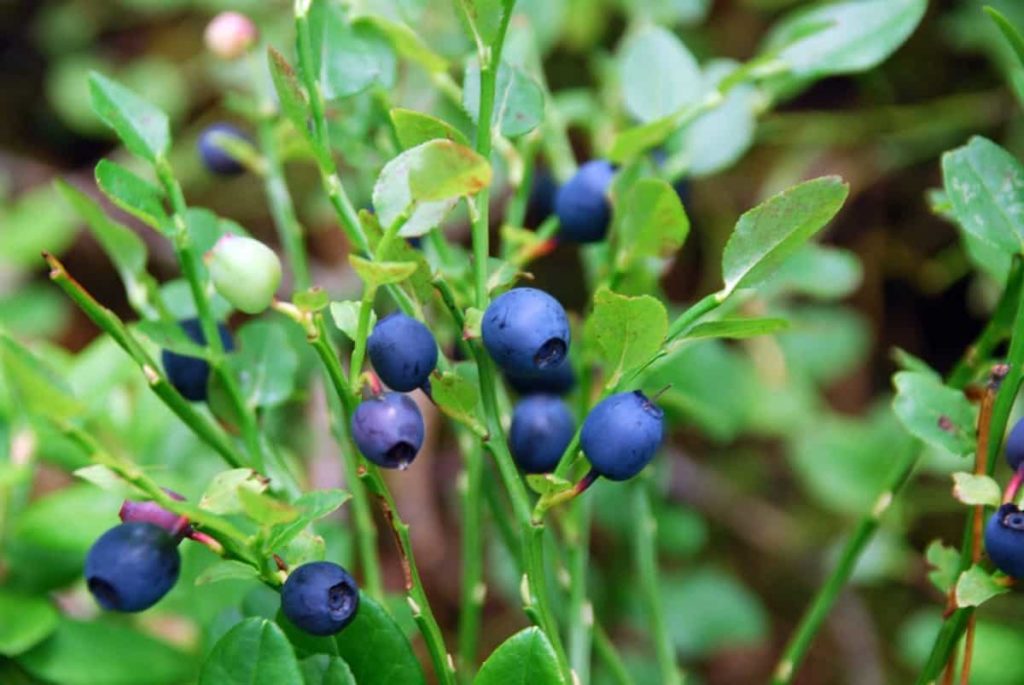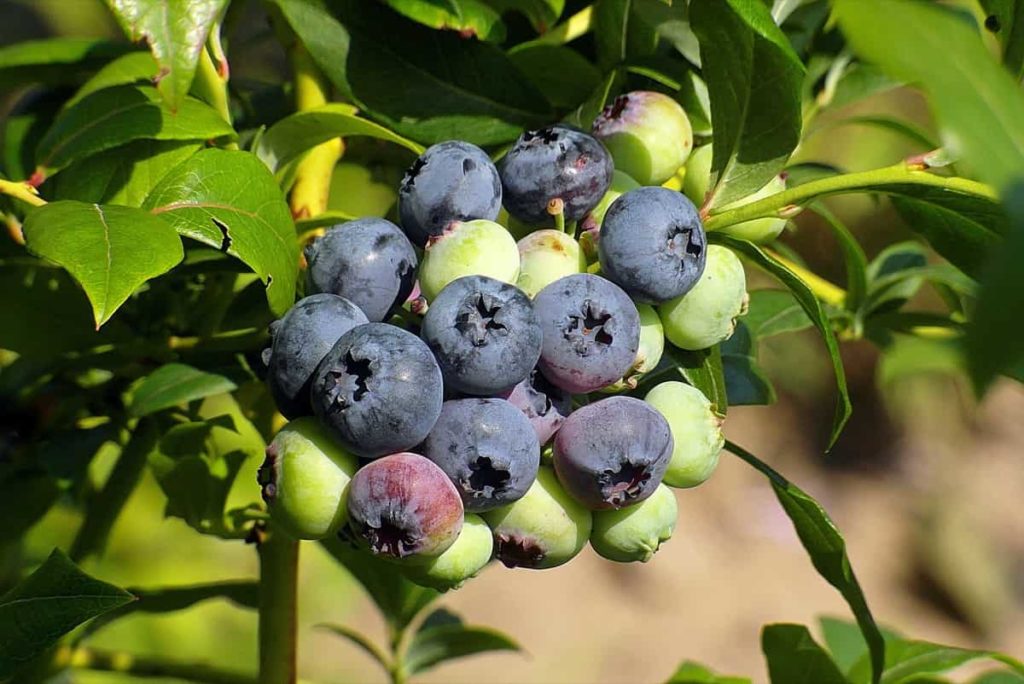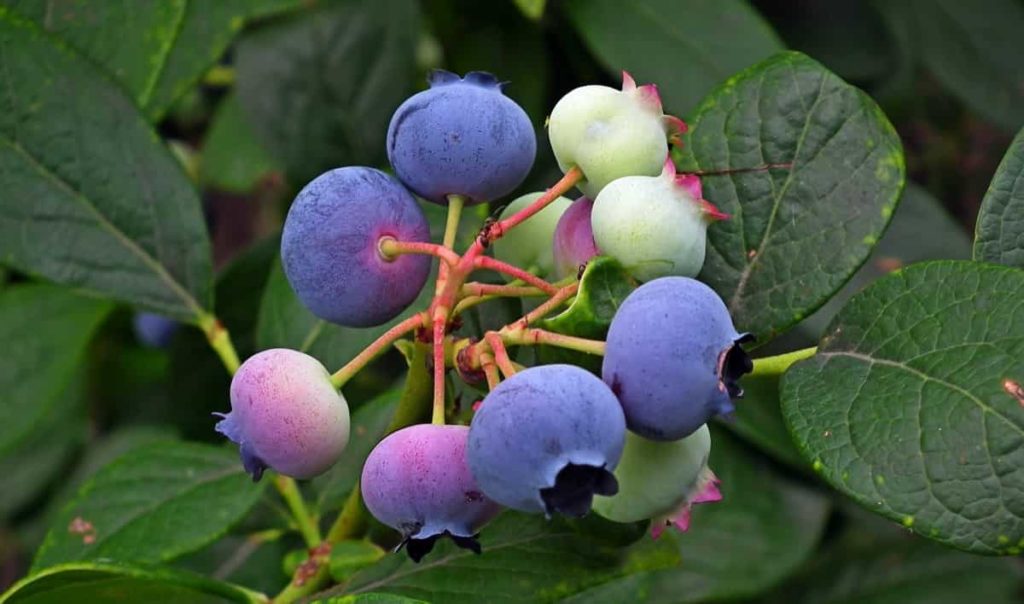Blueberry species such as highbush Blueberries and lowbush Blueberries serve a dual purpose in landscaping because of ornamental ground cover and edible crops. Blueberries are low-care plants but require the right conditions to grow. One advantage of growing plants from seeds is that the plants will be much more challenging and more resistant to disease. Growing Blueberries from seeds is not very difficult, but it requires patience and proper preparation.

How to plant Blueberries from seeds
How long does it take for Blueberries to grow fully?
- The months you need to wait during the year for an established shrub to produce berries will mostly depend on the type of shrub you plant. Climate also influences the amount of time these plants take to grow berries.
- It can take three to four years to produce fruit. Blueberries also produce better if they are cross-pollinated. This means that growing different types of Blueberry shrubs will help their production. Plants won’t get much fruit in the first two to three years. The crop is large after five years.
- Blueberry shrubs do not produce fruit every year. In general, the Blueberry shrub will take 2 to 3 years to mature to the point where it can produce fruit. Blueberry bush needs 2 to 3 years to mature enough to produce fruit. Highbush Blueberry plants typically need six to eight years to reach total production and are up to 5 to 8 feet high at maturity.
How many Blueberries can you get from one plant?
- Gardeners can expect to harvest 2.2 to 4.5 kg of fruit per plant from mature highbush Blueberries. Half-high Blueberries typically produce 450 grams to 1.3 kg per plant. Once established, the annual application of acid-producing fertilizers, such as ammonium sulfate, in early spring is sufficient for Blueberries.
- This new Blueberry produces two crops every year, one in the middle of summer, like the other Blueberry, then the new growth bursts into bloom a second time, resulting in a second crop before the plants are dormant for the winter.
In case you missed it: How to Prepare the Soil for Blueberry Trees: Best Soil Mix, pH, Compost, and Recipe

Germinating Blueberry seeds
- Growing Blueberries from seeds is not complicated but requires patience, as seeds take a long time to grow, and you’ll take some time to get any fruit. You can propagate low-bush Blueberries very easily from seeds. The plants can then be arranged in prepared rows, in vacant fields, or as an ornamental ground cover plant for home landscaping. The best time to start seeds is in January or February.
- Once you’ve collected Blueberry bush seeds, they must be scarified. Put them in damp paper towels and keep them in the freezer for 90 days. The cold stratification will break the rest period of the seeds, so they are ready to plant.
- Sprinkle the seeds evenly over the moss, then cover with a very thin moss cover. It is essential not to make this covering thick. Keep the moss moist but not soaked and flat in a warm room and covered with newspaper. Blueberry seeds can germinate in six to eight weeks. Place the seeds in a warm and sunny location with temperatures ranging from 15°C to 21°C.
- If the fungus develops on the moss surface, spray with any type of garden fungicide to control it. Blueberry seeds have slow germination; the first seeds will probably start growing in about a month and finish germinating in the next 2 to 3 months. If you grow Blueberries from seeds, it will take three years for plants to produce many Blueberries.
Do I need more than one Blueberry plant?
- Blueberries need full sun. Plant two or more varieties for successful pollination. Plants won’t get much fruit in the first 2 to 3 years. The Blueberry plants are self-fertile (each flower has the necessary male and female parts), but you should still buy more than one variety.
- Two or more varieties blooming simultaneously will ensure cross-pollination and larger fruit, even in varieties classified as self-fruitful, meaning they don’t need cross-pollination to set fruit. Planting another Blueberry within 100 feet of the other will help the bees cross-pollinate the flowers, boosting the chances of fruit production. Planting a different type can result in larger and more abundant berries.
The best fertilizer for growing Blueberries
- Ammonium sulfate is the most commonly recommended Blueberry fertilizer to keep soil pH acidic. Generally, 56 to 113 grams per bush per year is enough to maintain an established pH between 4.5 and 5.1.
- You can use blood or fish meal to provide nitrogen for Blueberries. Sphagnum peat or coffee grounds will provide acidity. Bone meal and seaweed can provide potassium and phosphorus. Blueberries require three separate fertilizer applications; the first is applied when new growth begins in the spring, followed by a second application after six to seven week. A third request is made immediately after harvesting.
- Blueberries require acidic, sandy soil and nitrogen-rich fertilizers. Give your Blueberries atleast an inch of water per week (they’ll need more during fruit production). Pinch the flower buds for the first three years to maximize shrub growth. Prune the dormant Blueberry bushes to clear the old growth. You’ll need to fertilize your bushes in early spring for the best possible Blueberry yield. Adding fertilizer early in the season gives the bushes enough time to absorb all the nutrients.
In case you missed it: 17 Common Blueberry Plant Problems: How to Fix Them, Solutions, and Treatment

Why do my Blueberries flower but not fruit?
- The most common reason Blueberry bush flowers don’t bear fruit is that the soil isn’t acidic enough. The lack of pollination will prevent the Blueberry shrub with flowers from producing fruit. Also, a very small Blueberry bush can flower well but produces no fruit.
- Blueberry plants require full sunlight. Like most plants grown for food, Blueberries do best in full sunlight (at least 6 hours). They may tolerate some partial shade, but too much shade will reduce flowering and fruiting.
- While Blueberries themselves are self-fruitful, they will benefit from the proximity of another Blueberry plant. You may have insufficient pollination if you don’t have any flowers on your Blueberries. Planting another Blueberry within 100 feet of the other will help the bees cross the blossoms, boosting the chances of fruit production. Planting a different type can result in more extensive and abundant berries.
Soil requirement for growing Blueberries
- Blueberries require a sheltered site with full sunlight, with well-drained but moisture-retentive, acidic soil that does not dry or become waterlogged in the winter. To plant directly in the ground, work about two and 1/2 feet in diameter and 1 foot deep for each plant in the planting area.
- Adding two tablespoons of vinegar to a gallon of water and giving this water to the plants every week will also significantly reduce the pH of the soil. Blueberries need acidic soil to grow. The ideal pH for them is between 4.5 and 5.0. Blueberry is like soil that is high in organic matter.
The best time to plant Blueberries
- Plant Blueberries during late autumn or early spring. In poorly drained soil, plant them in raised beds to avoid any water-logging. The best time to start seeds is in January or February. Get seeds from Blueberries that have been frozen for at least 90 days.
- Blueberries should be planted in the fall, mid-October, or early spring when the severe freezing has passed. When you receive your plants, make sure they look healthy and that the roots are moist.
In case you missed it: Best Fertilizer for Blueberries: Homemade, Organic, Compost, Natural, Liquid, How and When to Apply

Do Blueberries need a lot of sun?
- Blueberry plants grow well in a sunny place with fertile soil that is well-drained. It requires about six to eight hours of sunlight. Blueberries grow best in full sunshine. The plants tolerate partial shade, but too much shade causes plants to produce less flowers and fruits. Avoid areas surrounded by trees. Trees provide much shade, compete with plants for water and nutrients, and interfere with air movement around plants.
- Choose a site with good air movement that receives full sun for at least eight hours daily. Blueberries will tolerate soils with a pH ranging from 3.8 to 5.5 but prefer a soil pH close to 4.5, which in most areas will require the addition of elemental sulfur to reduce pH.
- Weed-free, well-drained soil with a sunny location works well for blueberry plants. Find your Blueberry plants where irrigation is readily available because keeping the root zone moist during the growing season will yield the amazing results.
What grows well with Blueberries?
You can plant Blueberries near flowers such as Lilac and Azaleas. Herbs like Basil and Thyme act as live mulch or ground cover, controlling weeds and regulating soil temperature and humidity. They can handle relatively acidic soil conditions, but nothing is invasive. Growing cover crops such as grass and grains already at the planting site is a great way to fertilize the soil and pave the way for successful Blueberry shrubs.
Pruning Blueberries
- Any pruning of Blueberry bushes, especially mature shrubs, is essential for the successful production of Blueberries. Blueberry shrubs that have not been done annually may become overgrown and less productive. Proper training of Blueberries is essential to maintain the size of the plant, its shape, and also productivity.
- Unlike edibles planted and harvested in one season, Blueberry shrubs require more time to set up before producing a strong harvest. To grow a high-yielding Blueberry shrub, pinch flowers in the first two years. Pinching the bloom gives the plant time to establish itself and mature.
- You should perform careful renewal pruning to encourage new stem production in which half of the branches are cut back to the ground. Always cut out the oldest, thickest ones. This forces the new canes to grow from the roots.
- With a moderate of care, the Blueberry plants will produce delicious and healthy Blueberries for many years. It is also essential to prune them every year. Do so in February or March before the plant gets busy growing.
Water requirement for growing Blueberries
- Blueberries must be watered once a week, regardless of their growing season. This is because blueberries need an inch of moisture per week in vegetative/growth mode.
- Give them at least 1 inch per week during the growing season and up to 4 inches per week during fruit ripening. Water equally on all sides of the plant.
- Blueberry plants thrive in well-drained soil and don’t like waterlogged conditions. Make sure you give them enough water. When bearing fruit, blueberries require about one to two inches of water every seven days. New plants can be hydrated at a rate of one inch of water four times a month to jump-start their growth.
The best time to harvest Blueberries
Blueberries are usually ready to harvest between June and August. Don’t rush to pick up the berries as soon as they turn blue. When they are fully ripened, you should harvest Highbush Blueberries every five to seven days.
In case you missed it: How To Start Blueberry Garden, Tips, and Techniques

Growing Blueberries in pots
- Blueberries are beautiful plants and well-suited for container growth. Highbush Blueberries require well-prepared soil, but with proper planting and maintenance, they can be grown in containers.
- Choose a well-draining, large weather-proof container like a wooden barrel planter. Blueberry plants can thrive in containers in any area and bear fruit that receives full sun. Mature Blueberries require a container at least 24 inches deep and about 24 to 30 inches wide. When planting small bushes, start with a small container and repot as you grow.
Should I cover my Blueberry bushes in winter?
- Protecting Blueberries can be beneficial in winter by covering plants and mulching around them. A covered and safely anchored PVC frame can accomplish this purpose. Protect the Blueberry shrub from cold winter winds and ice damage by wrapping it in burlap. You can also covover the containers in multiple layers of burlap or insulation material.
How deep do Blueberry roots go?
Blueberry plants generally have shallow root systems whose majority of roots are about 7 to 14 inches deep in the soil and not more than fifteen inches deep. Blueberry plants have a very good shallow root system. You can plant Blueberry bushes at a distance of 2 or 2.5 feet to make solid hedgerows or place them up to a distance of 6 feet so that they can grow individually. If you plant in rows, allow 6 to 10 feet between rows.
Protecting Blueberries from birds
Bird netting is the most effective ways to protect berries from birds. Bird netting is highly effective at excluding birds, but there are difficulties. Initially, you should cover the nets directly on the Blueberry bushes. Most Blueberry farmers use a ¾-inch mesh to protect their Blueberry crops. Depending on the birds attacking your plants, a ¾-inch mesh should be enough.
Grow Blueberries indoors
- You can grow Blueberries indoors as long as you meet the plant’s needs. The two most important factors are getting enough cool hours for your chosen cultivar and providing direct sunlight daily. Acidic soil and constant water will keep the plant flourishing.
- Blueberries grow very well indoors and also in containers. This way, you should control soil pH level, which is an essential factor in the growth of Blueberries.
In case you missed it: Growing Blueberries At Home – A Guide For Beginners

What color are ripe Blueberries?
- Ripened Blueberries are thick and dark blue with a dusting of gray on the surface. White and green Blueberries are not ripened; leave them on the bush or in the store because they won’t ripen. It’s hard to tell if a Blueberry will be sweet just by looking at its size, but note the color generally; the darker and bluer the Blueberry, the sweeter the taste should be.
Conclusion
Learning how to grow Blueberries from seeds is a rewarding process as you appreciate the simple nature of the shrub in early spring and then feast on its reward in the summer. The fruits can be unique, but the bush stands out and has a beautiful plant on your property.
Growing Blueberries from seeds aren’t very difficult, so your first attempt at growing fruit won’t be overwhelming. You’re gaining more gardening knowledge when you plant Blueberry seeds. Blueberry shrubs have bright green leaves during the growing season and then turn purple, red, orange, and yellow during the autumn.
- Where to Place Indoor Plants in Your Home
- How to Grow Tomatoes Organically at Home: A Comprehensive Guide
- Organic Gardening on a Budget: Low-Cost Methods and Materials
- Gongura Seed Germination and Planting Methods
- Cabbage Seed Germination and Selection
- Broccoli Seed Germination and Selection
- Asparagus Seed Germination and Variety Selection
- Seasonal Flower Gardening: Best Practices for Spring, Summer, Fall, and Winter
- How to Grow Hibiscus from Flower
- Plantation Ideas for Home Decoration: A Beginners Guide
- Flower Garden Designs and Layouts for Beginners
- Planting and Spacing Techniques in Papaya: A Beginner’s Guide
- Growing Gold: Essential Techniques for Planting Pineapples
- How to Make Kalanchoe Plant Bushy: Home Remedies and Solutions
- 11 Reasons Why Your Gardenia is Not Blooming: Home Remedies and Solutions
- Eco Elegance: The Guide to Designing a Drought-Tolerant Landscape
- Gardening on a Slope: Strategies for Hillside Landscaping
- Nourish and Flourish: Top Organic Mulches for Thriving House Plants
- Everything You Want to Know about Indian Mogra Flower: Discover Uses and Growing
- Green Thumb Success: Expert Tips for Cultivating Greenhouse Pumpkins All Year Round
- Maximize Growth & Flavor: The Ultimate Guide to Companion Planting in Herb Gardens
- How to Control Rhododendron Problems Naturally: Home Remedies and Organic Ways to Fix Them
- Natural Magic: The Remarkable Benefits of Cinnamon for Plants
- Best Steps to Revive Dying Tulip with Natural and Organic Treatment
- 10 Reasons Why Your Angel Trumpet is Not Blooming: Remedies and Treatment
- How to Fix Periwinkle Leaf and Flower-Related Problems: Natural Remedies and Solutions
- How to Fix Zinnias Leaf and Flower Problems: Discover Natural and Home Remedies
- Organic Steps to Induce Lemon Tree Flowers: A Comprehensive Guide
- Bloom Booster: Crafting the Perfect Homemade Bougainvillea Fertilizer
- Optimizing Growth: A Guide to Applying NPK Fertilizer for Potted Plants
- 10 Best Homemade Fertilizers for Rubber Plant: DIY Recipes and Application Method
- How to Boost Female Pumpkin Flowers: Effective Steps for More Flowers and High Yields
- Transform Your Indoor Garden: Top Benefits of Pink Salt for Houseplants
- 10 Best Homemade Fertilizers for Peacock Plants (Calathea): Easy DIY Guide
- Unlock Blooms: 9 Reasons Why Your Potted Chrysanthemum is Not Blooming
- 8 Reasons Why Your Potted Hibiscus is Not Blooming: Fix it with Simple Solutions